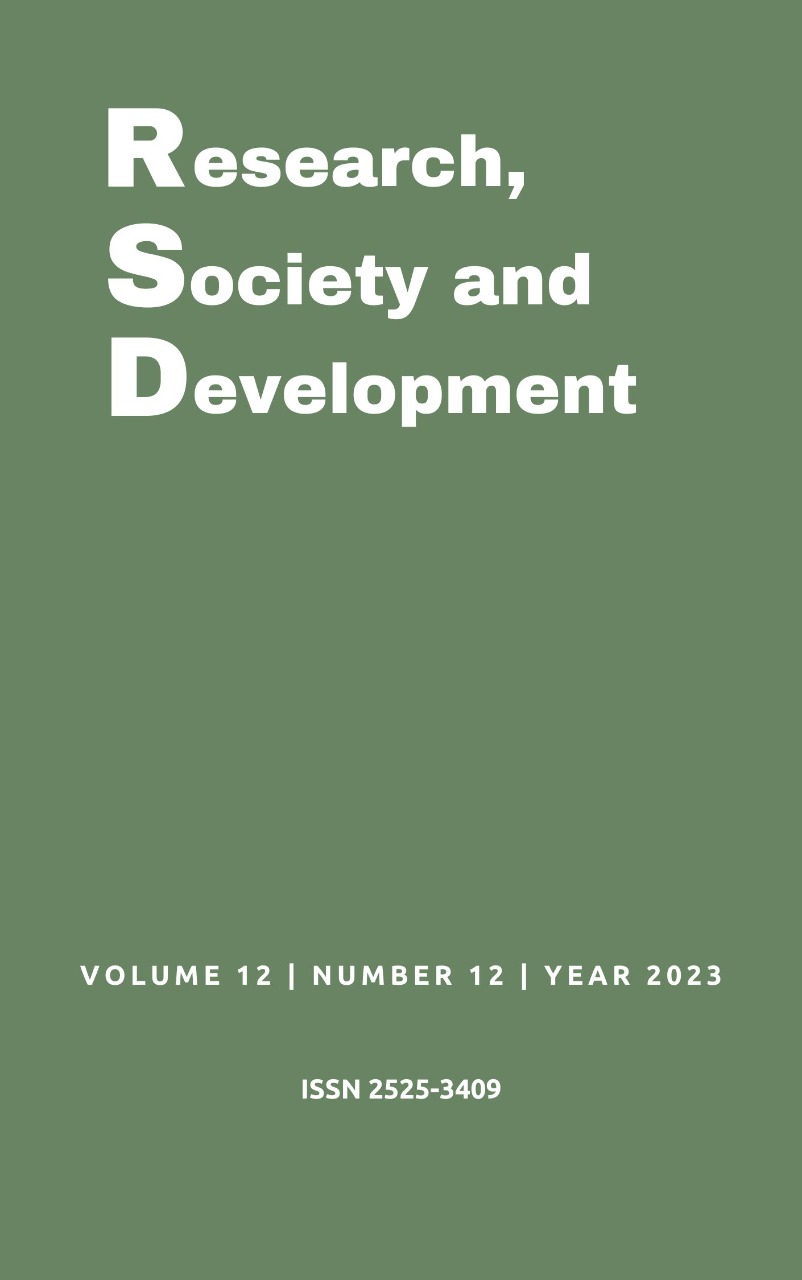The identification of improvements to the process of release of Blood Glucose test results from a clinical analysis laboratory with the aid of Paraconsistent Annoted Evidential Locig Eτ
DOI:
https://doi.org/10.33448/rsd-v12i12.44049Keywords:
Decision-making, Paraconsistent annotated evidential logic Eτ, Blood glucose.Abstract
The process of conducting tests in a clinical laboratory goes through different stages. For the most part, it is automated, but data discrepancies require interruptions for human decision-making. Such interruptions delay the results and impact medical decisions. If we consider that one of these diagnoses is diabetes, there is a worsening of the situation. Based on this issue, the objective of this work is to propose an improvement in the process of releasing the results of laboratory tests through the application of Paraconsistent Annotated Evidential Logic Eτ and the Para-Analyzer algorithm. This process aims to enable the professionals involved in these stages to develop decision-making more quickly. As a specific focus, the research used the detection of blood glucose levels, a test performed to confirm a diagnosis of diabetes. In the theoretical depth of the study, questions about Diabetes Mellitus (DM) and Paraconsistent Annotated Evidential Logic Eτ were raised. As a methodological process, two phases were used. In the first phase, a survey of common sensitive points in this type of test was conducted. Then, this data was associated with the blood glucose evaluation flow in a clinical laboratory and applied through the Para-Analyzer algorithm using Paraconsistent Annotated Evidential Logic Eτ. From this, a model was presented to assist biomedical professionals in their decision-making, seeking a faster and more reliable release of results for patients. As a secondary result, it was also possible to perceive that Paraconsistent Annotated Evidential Logic Eτ can be applied in other areas of healthcare, providing an option for process improvement in general.
References
Abe, J. M. (1992). Fundamentos da lógica anotada. Tese de Doutorado. Programa de Pós-Graduação em Filosofia. Universidade de São Paulo.
Abe, J. M. (2015). Sistemas paraconsistentes baseados em inteligência: Novas tendências nas aplicações de paraconsistência (Vol. 94). Springer.
Abe, J. M., Akama, S., & Nakamatsu, K. (2015). Introduction to Annotated Logics (Vol. 8). Cham: Springer International Publishing.
Abe, J. M., Lopes, H. F. S., & Anghinah, R. (2016). Paraconsistent Neurocomputing and Biological Signals Analysis. In J. M. Abe (Ed.), Paraconsistent Intelligent-Based Systems. Intelligent Systems Reference Library. 94, 273-306. Cham: Springer International Publishing.
Abe, J. M., Silva Filho, J. I., Celestino, U., & Araujo, H. C. (2011). Lógica Paraconsistente Anotada Evidencial Eτ. Comunicar.
Antunes, Y. R., Oliveira, E. M., Pereira, L. A., & Picanço, M. F. P. (2021, dezembro). Diabetes Mellitus Tipo 2: A importância do diagnóstico precoce da diabetes. Brazilian Journal of Development, 7(12), 116526-116551. https://ojs.brazilianjournals.com.br/index.php/BRJD/article/view/41218
Blick, K. E. (1997). Sistemas informáticos laboratoriais de tomada de decisão como ferramentas essenciais para o alcance da qualidade total. Química Clínica, 43 (5), 908-912.
Brutti, B., Flores, J., Hermes, J., Martelli, G., Porto, D. S., & Anversa, E. T. R. (2019, julho/agosto). Diabete Mellitus: definição, diagnóstico, tratamento e mortalidade no Brasil, Rio Grande do Sul e Santa Maria, no período de 2010 a 2014. Brazilian Journal of Health Review, 2(4), 3174-3182. https://ojs.brazilianjournals.com.br/ojs/index.php/BJHR/article/view/2172/2203
Carvalho, F. R., & Abe, J. M. (2011). Tomadas de decisão com ferramentas da lógica paraconsistente anotada – Método Paraconsistente de Decisão – MPD. São Paulo: Blücher, 2011.
Cobas, R. (2015, outubro/dezembro). Diabetes: recordando uma história. Revista do Hospital Universitário Pedro Ernesto, 14 (4), 35-36. https://www.e-publicacoes.uerj.br/index.php/revistahupe/article/view/20069
Dill, R. P., Costa Jr., N., & Santos, A. A. P. (2014). Corporate Profitability Analysis: A Novel Application for Paraconsistent Logic. Applied Mathematical Sciences.
Fiocruz. (2021). Diabetes. https://portal.fiocruz.br/diabetes
Ministério da Saúde. (2006). Diabetes Millitus. https://bvsms.saude.gov.br/bvs/publicacoes/diabetes_mellitus.PDF
Ministério da Saúde. (2023). Diabetes. https://bvsms.saude.gov.br/diabetes
Nakamatsu, K., & Abe, J. M. (2009). The development of paraconsistent annotated logic programs. International Journal of Reasoning-based Intelligent Systems, 1 (1/2), 92.
Orozco, L. B., & Alves, S. H. S. (2017). Diferenças do autocuidado entre pacientes com Diabetes Mellitus Tipo 1 e 2. Psicologia, Saúde e Doenças, 18, (1), 234-247. https://www.redalyc.org/pdf/362/36250481019.pdf
Silva Filho, J. I.., Abe, J. M., & Lambert-Torres, G. (2008). Inteligência Artificial com as Redes de Análises Paraconsistentes. LTC.
Souza, S., & Abe, J. M. (2015). Paraconsistent Artificial Neural Networks and Aspects of Pattern Recognition. In J. M. Abe (Ed.), Paraconsistent Intelligent-Based Systems. Intelligent Systems Reference Library. 94, 207-231. Cham: Springer International Publishing.
Torres, C. R., & Reis, R. (2015). The New Hardware Structure of the Emmy II Robot. In J. M. Abe (Ed.), Paraconsistent Intelligent-Based Systems. Intelligent Systems Reference Library. 94, 87-103. Springer International Publishing.
Yin, R. K, (2015). Estudo de Caso: Planejamento e métodos. Bookman.
Downloads
Published
Issue
Section
License
Copyright (c) 2023 José Rodrigo Cabral; Jair Minoro Abe; Luiz Rodrigo Bonette; Patrícia Cristina de Lima

This work is licensed under a Creative Commons Attribution 4.0 International License.
Authors who publish with this journal agree to the following terms:
1) Authors retain copyright and grant the journal right of first publication with the work simultaneously licensed under a Creative Commons Attribution License that allows others to share the work with an acknowledgement of the work's authorship and initial publication in this journal.
2) Authors are able to enter into separate, additional contractual arrangements for the non-exclusive distribution of the journal's published version of the work (e.g., post it to an institutional repository or publish it in a book), with an acknowledgement of its initial publication in this journal.
3) Authors are permitted and encouraged to post their work online (e.g., in institutional repositories or on their website) prior to and during the submission process, as it can lead to productive exchanges, as well as earlier and greater citation of published work.


